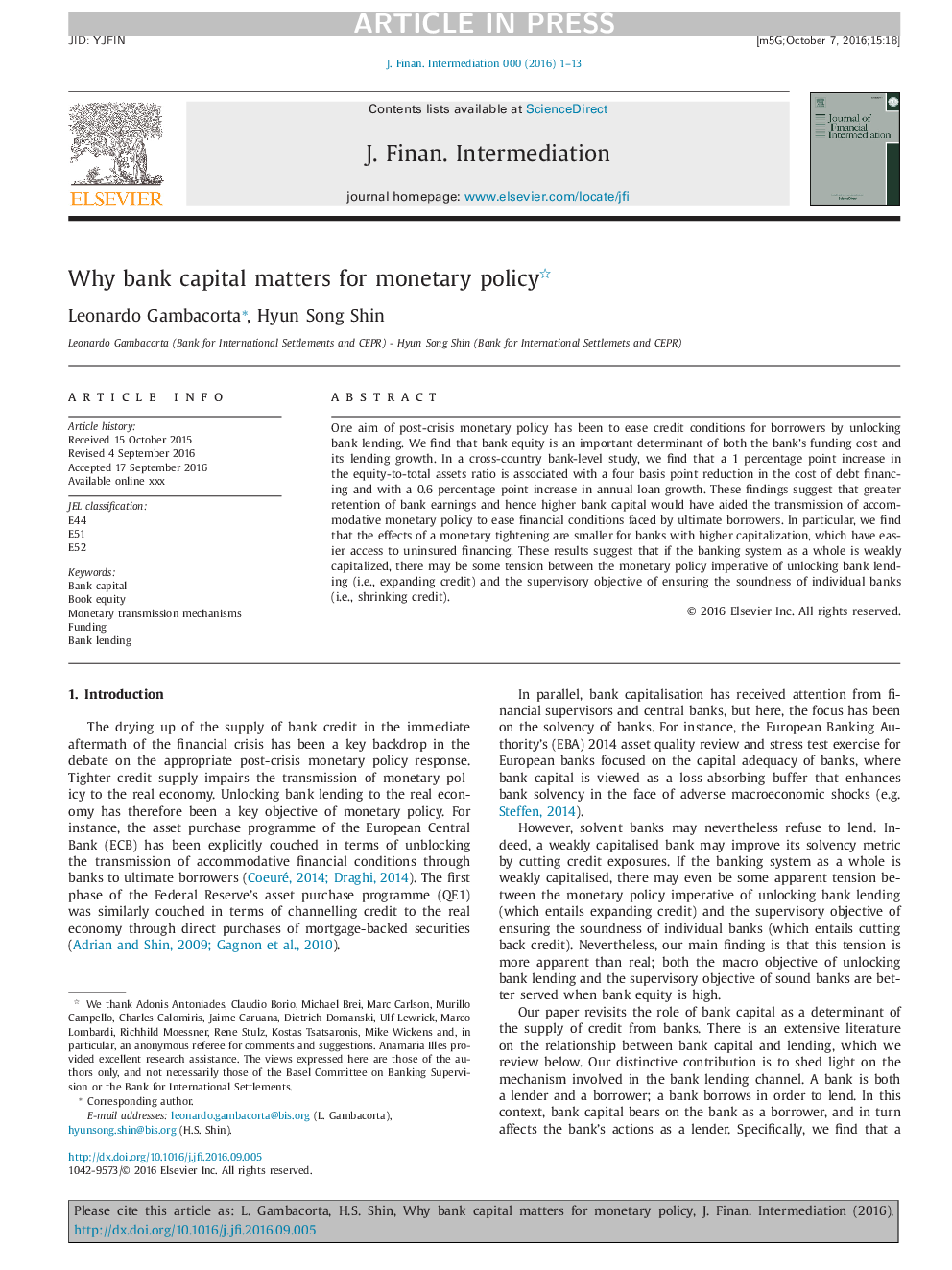| Article ID | Journal | Published Year | Pages | File Type |
|---|---|---|---|---|
| 8960877 | Journal of Financial Intermediation | 2018 | 13 Pages |
Abstract
One aim of post-crisis monetary policy has been to ease credit conditions for borrowers by unlocking bank lending. We find that bank equity is an important determinant of both the bank's funding cost and its lending growth. In a cross-country bank-level study, we find that a 1 percentage point increase in the equity-to-total assets ratio is associated with a four basis point reduction in the cost of debt financing and with a 0.6 percentage point increase in annual loan growth. These findings suggest that greater retention of bank earnings and hence higher bank capital would have aided the transmission of accommodative monetary policy to ease financial conditions faced by ultimate borrowers. In particular, we find that the effects of a monetary tightening are smaller for banks with higher capitalization, which have easier access to uninsured financing. These results suggest that if the banking system as a whole is weakly capitalized, there may be some tension between the monetary policy imperative of unlocking bank lending (i.e., expanding credit) and the supervisory objective of ensuring the soundness of individual banks (i.e., shrinking credit).
Related Topics
Social Sciences and Humanities
Business, Management and Accounting
Strategy and Management
Authors
Leonardo Gambacorta, Hyun Song Shin,
